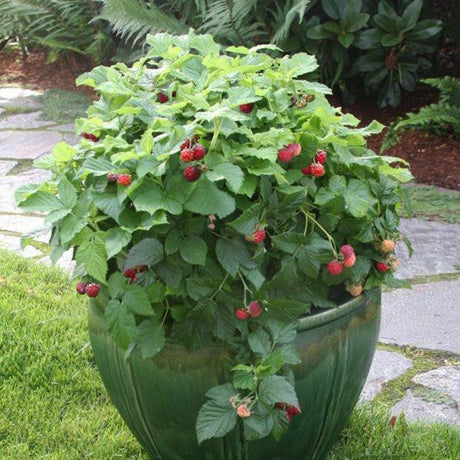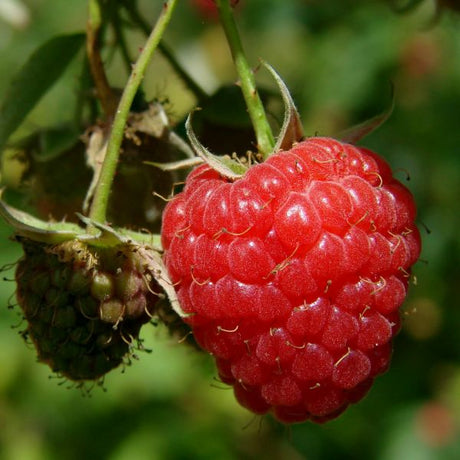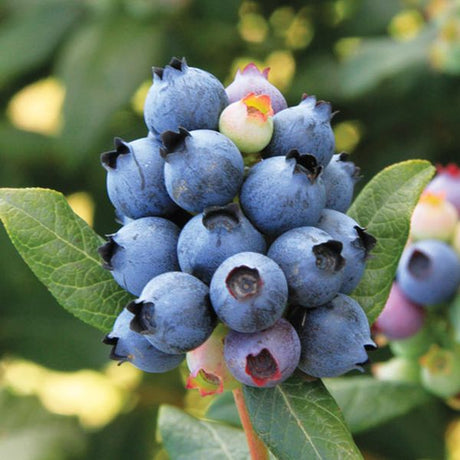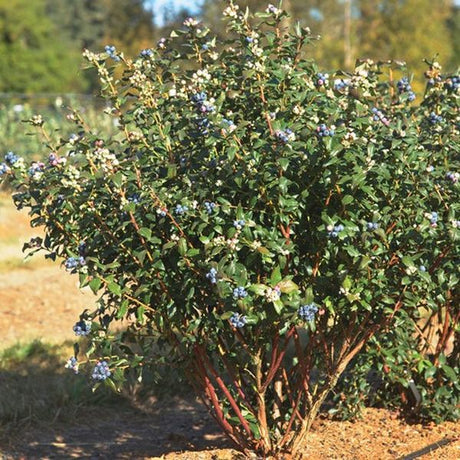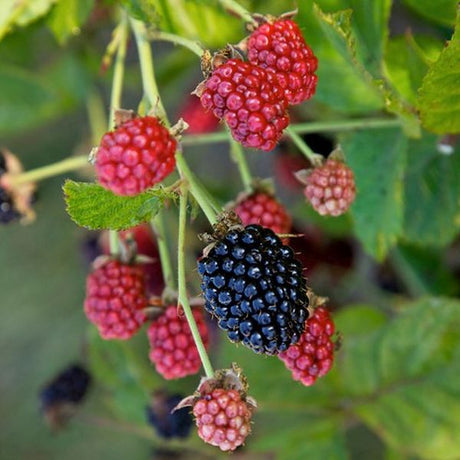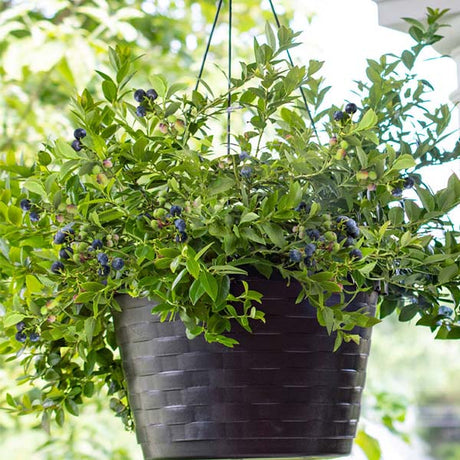-
Vaccinium corymbosum 'ZF06-043'
Regular price $4527Unit price /Unavailable -
-
Sold out13% off
-
Sold out11% off
Vaccinium 'ZF06-179'
Sale price $4533 Regular price $5120Unit price /Unavailable -
Sold out14% off
Vaccinium x 'ORUS-61-1'
Sale price $4533 Regular price $5256Unit price /Unavailable -
Sold out13% off
Vaccinium corymbosum 'ZF06-079'
Sale price $4533 Regular price $5196Unit price /Unavailable -
Sold out14% off
Rubus x 'APF-236T'
Sale price $4283 Regular price $4974Unit price /Unavailable -
Vaccinium corymbosum 'FC12-187'
Sale price From $5673 Regular price $6611Unit price /Unavailable -
Vaccinium corymbosum 'FC12-029'
Sale price $5673 Regular price $6463Unit price /Unavailable
Delicious Berries With Bushel and Berry®
This is the brand for home growers and go-getters. Store-bought berries alright but nothing beats the satisfaction from growing your own from berry plants right in your home garden!
Bushel and Berry prides themselves on providing easy-to-grow, self-pollinating, berry bushes. No longer will you need a mini-orchard in order to adequately pollinate and produce.
From raspberries to blueberry plants, you'll find every berry needed for a tasty seasonal fruit salad in the Bushel and Berry Collection.
Almost Too Good to Eat...Almost
It's hard to pick favorites from a line as delectable as this one. However, we'd be remiss if we didn't mention the beloved Jelly Bean® Blueberry. It's a reliably bountiful blueberry producer that's perfect for big and small gardens alike.
For those with exceptionally small outdoor areas or are working with just an apartment balcony, Midnight Cascade® is the perfect fit! Its downward growing branches make it a great option for hanging baskets.
If you're not big into blueberries, don't worry, Bushel and Berry has you covered with Baby Cakes® Blackberry. Once they're ripe, pluck a few off your plant to add to oatmeal or to cook into jam!
#ProPlantTips for Care
Blueberries love full sun and acidic, well-drained soil with a pH between 4.5 and 5.5. If you're planting in the ground we suggest adding Sulphur, Peat Moss and 25% Pathway Bark.
Here's a little tip though, it's much easier to control the soil acidity in a smaller environment, like a container. Try planting your newest addition in a pot on your patio using acidic soil or fertilizing with Dr. Earth Acid Lovers Organic and Natural Premium Fertilizer.
No matter what though, taking care of your Bushel and Berry shrub should be a piece of cake. Browse the collection and order your favorites today!
FAQ's for Buying Bushel and Berry® Online
What makes Bushel and Berry® plants ideal for patio containers and small‑space gardens?
What makes Bushel and Berry® plants ideal for patio containers and small‑space gardens?
Bushel and Berry® selections are bred specifically for modern backyards where space is limited. Breeders focus on (1) compact, naturally dwarf habits that stay under 3–4 ft tall; (2) attractive foliage, flowers, and fruit so the plants double as ornamentals; and (3) self‑pollinating genetics, eliminating the need for a second variety. Together, these traits let gardeners tuck a blueberry, blackberry, or raspberry onto a deck or balcony and still enjoy full crops without complicated cross‑pollination or aggressive suckering common in traditional berry bushes.
Which USDA hardiness zones suit Bushel and Berry® varieties, and how do I match the right plant to my climate?
Which USDA hardiness zones suit Bushel and Berry® varieties, and how do I match the right plant to my climate?
Most cultivars thrive in Zones 4 – 8; a few push to Zone 9 in mild‑winter regions. Start by confirming your zone, then check each variety’s tag—Baby Cakes® blackberry and Raspberry Shortcake® perform well to Zone 4, while Peach Sorbet® blueberry prefers Zones 5 – 8. If you garden at the colder end of a plant’s range, insulate container roots with a 2‑in. mulch layer and group pots out of wind. In hotter zones, provide afternoon shade and keep soil evenly moist to prevent heat stress. Matching zone plus micro‑climate ensures reliable overwintering and fruit set.
How do I plant Bushel and Berry® blueberries, raspberries, and blackberries in containers for maximum harvest?
How do I plant Bushel and Berry® blueberries, raspberries, and blackberries in containers for maximum harvest?
1 ) Choose a pot at least 12–16 in. wide with drainage holes. 2 ) Fill with a peat‑based, bark‑amended mix; for blueberries, blend in 25 % pine fines or sulfur to hit pH 4.5‑5.5. 3 ) Set the crown level with the soil surface and back‑fill firmly. 4 ) Water thoroughly until excess runs out. 5 ) Place in full sun (6 + hrs). 6 ) Feed with a balanced, slow‑release fertilizer at planting; switch blueberries to an acid fertilizer after year one. Following this sequence—size, mix, depth, moisture, light, nutrition—encourages quick root establishment and heavy berry production in the first or second summer.
Do Bushel and Berry® plants need a pollinator partner, or will one plant fruit on its own?
Do Bushel and Berry® plants need a pollinator partner, or will one plant fruit on its own?
Every Bushel and Berry® introduction is self‑fertile, so a single shrub will set fruit. Each blossom contains both male and female parts, and normal wind or bee activity moves pollen within the flower. Planting two of the same variety can increase total berry count by boosting blossom density, while mixing different varieties can extend the harvest window because early, mid‑, and late‑season types ripen sequentially. Either way, gardeners avoid the “must‑buy‑two” requirement typical of many standard blueberries.
What pruning, fertilizing, and winter‑care steps keep Bushel and Berry® plants productive year after year?
What pruning, fertilizing, and winter‑care steps keep Bushel and Berry® plants productive year after year?
Pruning: Fruit forms on second‑year wood. Each late winter, remove dead or crossing stems and thin the oldest canes at the base to keep 6–8 strong canes per plant. Fertilizing: In early spring, scratch a slow‑release, balanced fertilizer into the top inch of soil; switch blueberries to an acid‑specific formula. Watering: Provide 1 in. of water weekly during active growth; container plants may need daily irrigation in midsummer. Winter care: Plants in the ground need only 2 in. of mulch; containers in Zones 4‑5 benefit from grouping against a wall and wrapping pots with burlap stuffed with leaves. This annual routine balances renewal growth, nutrient supply, and root protection for consistent harvests.



